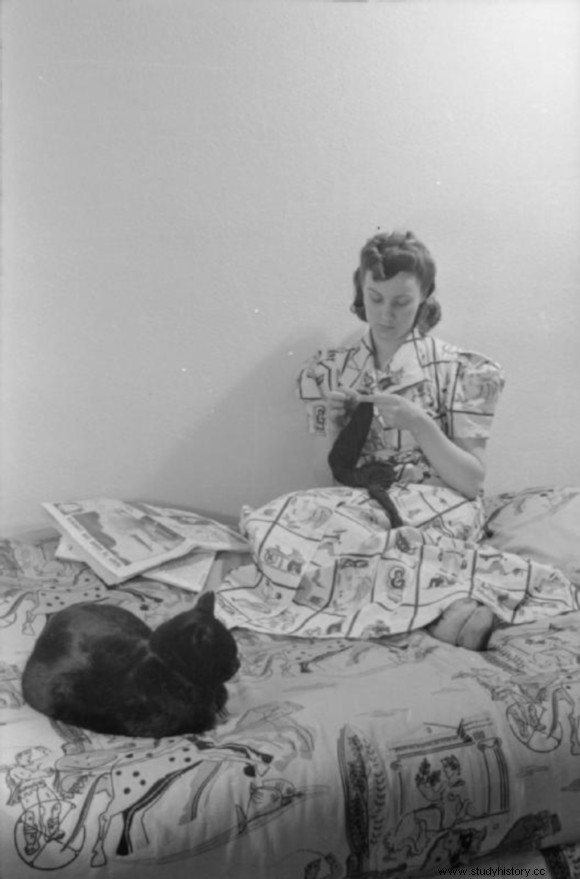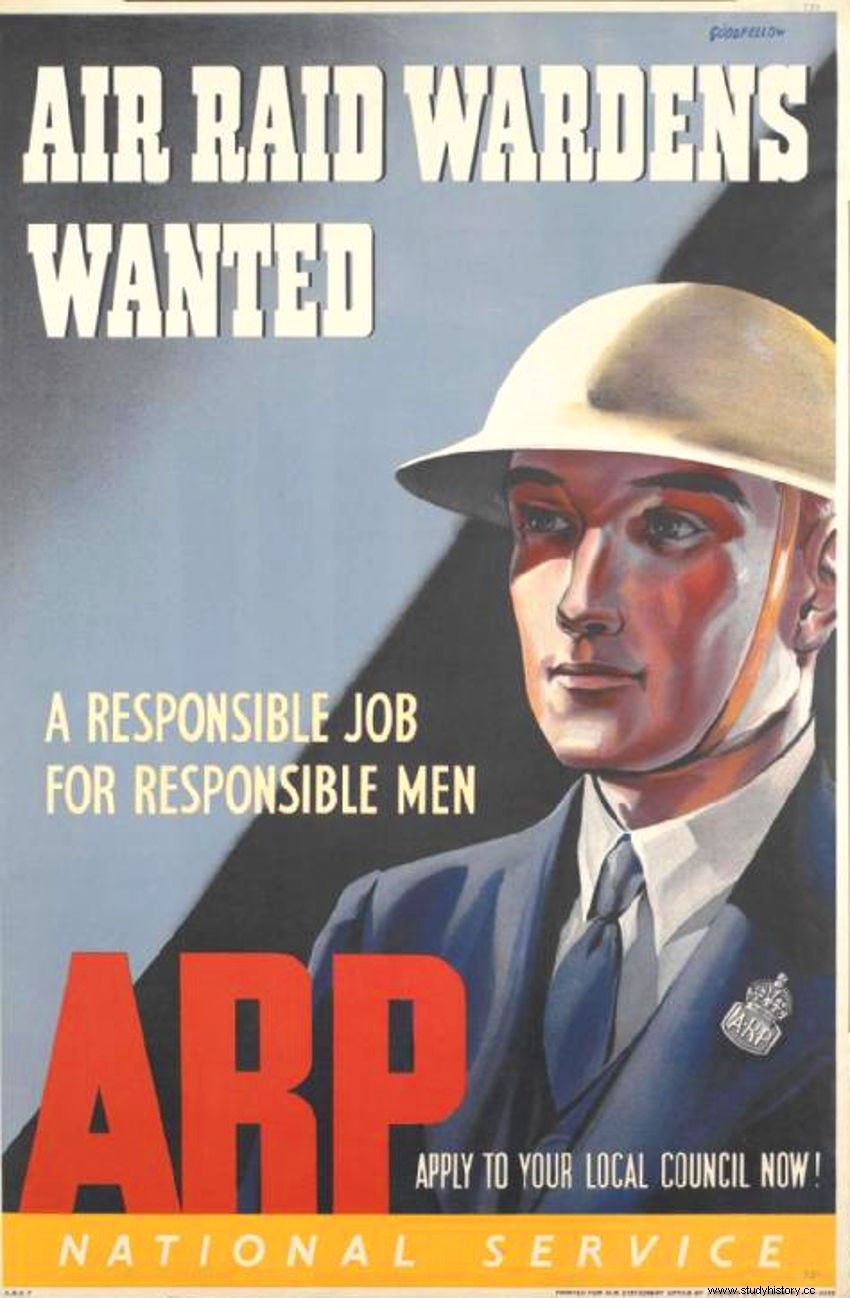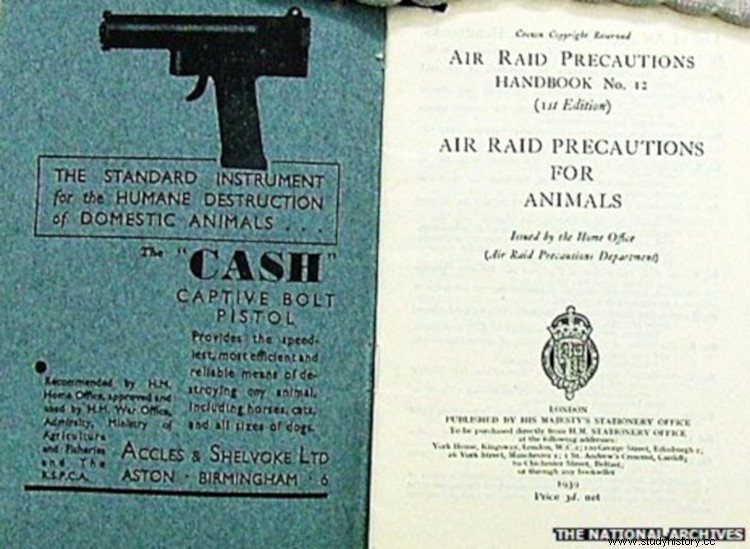At the start of World War II, the London government distributed a leaflet advising people to keep their pets safe in the countryside.
And, if they did not have that possibility, to sacrifice them for their own good, given the hardship that was going to befall the country imminently. Consequently, approximately seven hundred and fifty thousand animals died in a week, twice as many British in the entire conflict.
The impact of a war on the civilian population has always been devastating, either because of the direct military actions that it has to suffer almost as if it were a combatant, or because of the privations derived from the scarcity .

However, currently the massive presence of the media in recent conflicts has made it possible to discover thatanimals are also victims and not only those that traditionally formed part of the armies, such as horses, mules, dogs or pigeons; In this sense, the images of the zoo in Iraq, with its tenants turned into living skeletons, had wide repercussions.
But there are few zoos and, instead, many people have pets. It is not something that happens only now. In the summer of 1939, the winds of war were already blowing so strongly that everyone expected the outbreak of hostilities sooner or later.
It was in this context that NARPAC was created. (National Air Raid Precautions Animals Committee) an organization designed to deal with the problem of pets in a war context.
The NARPAC was an extension of the famous ARP (Air Raid Precaution), established in 1937 to protect civilians in case of air raids. Their organization was based on local committees in which they formed volunteer guards of various types:guards, ambulance drivers and messengers, for example, who coordinated with the firefighters and the police.
They were the ones who made sure that the lights in the houses were turned off during the attacks, the ones who made the reports of damages in the houses caused by the bombs, the ones who directed the citizens towards the shelters, etc.

Their image is familiar from seeing them often in movies. Initially, the guards did not have a uniform and only wore an armband and a helmet; as of 1941 they already had specific campaign clothing, blue in color. About one and a half million men and women They were part of that service throughout the war, of which one hundred and thirty-one thousand did it full time.
That summer NARPAC distributed an informational pamphlet among citizens. Titled Notice to Pet Owners , warned them of the convenience of sending their animals out of the cities, to the villages , fearing that there would not be enough food in the years to come and that the foreseeable rationing would prevent them from providing food.
The brochure read: «If you cannot place them in the care of neighbours, it really is kindest to have them destroyed»; that is, "If you can't leave them in the care of the [rural] neighbors, it really is more benevolent to put them down .»
When on September 1 Germany began the invasion of Poland, thus implicating the United Kingdom in compliance with its agreement with that country, that dark future for dogs, cats, fish and birds became a reality.
Just two days later the veterinary consultations they were overwhelmed by a multitude of people willing to follow official advice; Curiously, the document attached advertising for a slaughter gun , from a single projectile, to perform the operation at home.
Other organizations such as PDSA (People's Dispensary for Sick Animals) and RSPCA (Royal Society for the Prevention of Cruelty to Animals) opposed this measure. so drastic, not only because they were forced to collaborate in the sacrifices by giving up facilities and technicians, but also because they considered it excessive and premature.
In addition, an extra problem was created because many people simply got rid of their animals abandoning them . In fact, during the following years it would be shown that the supply would not reach levels as dramatic as had been said.
That is why an institution like Battersea Dogs and Cats , who had been working on the protection of domestic dogs and cats since 1860, advised those who consulted her not to rush. And although he only had four employees, he managed to care for and feed no less than one hundred and forty-five thousand pets during the war.
It is true that he had the active and tireless sponsorship of the Duchess of Hamilton , who toured England and Scotland in search of foster homes and managed to convert an old airfield into a sanctuary, inserting advertising spots on the BBC and even sending his staff to collect the animals from their homes.
Other animal owners also decided not to follow NARPAC's instructions and stay true to your friendship. They shared their rations and scavenged for extras on the black market in further evidence that Britain never really went hungry, thanks in part to convoys from America.
However, many of those who ignored NARPAC in the first place changed their minds a year later, in September 1940, when the Luftwaffe launched the Blitz , the London aerial bombardment and other cities.
Then the panic spread and there was a second wave of sacrifices in which the veterinary clinics were once again collapsed. Paradoxically, at that point there were already more voices against it and some officials, such as the Royal Army Veterinary Corps (Royal Army Veterinary Corps), which highlighted the usefulness of dogs in times of war.
In fact, many families had lent their dogs to the armed forces to collaborate in various activities while the state of war lasted and never saw them again:up to six thousand dogs were sacrificed and, it seems, MI5 himself came to watch the dogs. opponents to that measure.

Nor did the animals of the London Zoo escape the black fate, at least some of them. There was no shortage of accusations against the government for fomenting mass hysteria; as Hilda Kean says , one of the historians who studied this episode, the way to underline the state of war was «evacuate the children, close the curtains and kill the cat» .
The measure had another negative side effect:the extension of a certain pessimism, of a sadness common to many who got rid of their pets at the first adversity and, as was later shown, for no good reason.
The senses obituaries of animals were frequent in the press and, perhaps out of shame in a country that claims to be especially fond of domestic animals, this story tended to be relegated to silence and oblivion.
Only recently have things been put in place a little with a monument in Hyde Park to animals fallen in war; his epitaph ends with the graphic phrase "They had no choice." Kean herself explains:“People don't like to be reminded that at the first sign of war we went out to kill the kitten” .
